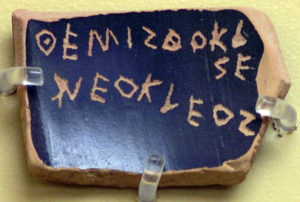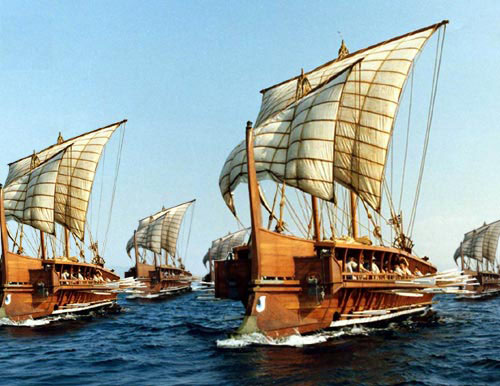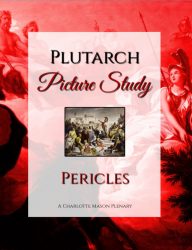Pericles Resources Page
The Resources on this page are free to use with The Annotated Plutarch: Pericles Guide by A Charlotte Mason Plenary.
Any artwork on this page that has a red border is available in the Pericles Picture Study as an 8.5″ x 11″ full-resolution print or as a PDF Download.
Each print comes with detailed information about the painting as well as study questions to connect it to Plutarch’s text.
For more information, see the Plutarch Picture Study for Pericles here..
Lesson #1: THE GOLDEN AGE OF ATHENS

PRINT #1: Dispute between Minerva and Neptune over the Naming of the City of Athens by René-Antoine Houasse
The artist chose to use the Roman names of Minerva and Neptune for this painting rather than the Greek names of Athena and Poseidon.
Read about King Cecrops and the battle between Athena and Poseidon in this book: Old Greek Stories by James Baldwin – chapter titled “The Horse and the Olive.”


Lesson #2: Plutarch's Introduction

Read more about the sculptor Phidias and his Statue of Zeus at Olympia at WorldHistory.org.

Read more about the nine Greek Muses at GreekMythology.com or read an article from Thinking Muse called “9 Muses to Inspire You.”
Lesson #3: Who was Pericles?

PRINT #2: Marble Bust of Pericles (Roman copy) by Kresilas
This marble bust of Pericles is a copy of an original statue that once stood at the entrance to the Acropolis in Athens. The original statue was a full-body depiction of Pericles in bronze by the Greek sculptor Kresilas in 430 B.C.E.
Lesson #4: Pericles the Orator
Learn more about the tyrant Pisistratus:
-
- The Story of the Greeks chapter The Tyrant Pisistratus by Helene Guerber
- Famous Men of Greece chapter Pisistratus the Tyrant by John Haaran
Lesson #5: The Great Buildings of Athens



PRINT #3: Acropolis at Athens by Leo von Klenze
Acropolis at Athens by Leo von Klenze is an idealized view of what the Acropolis and surrounding buildings might have looked like shortly after completion.
Watch a virtual reality tour of the Acropolis in all its glory. Or view the ruins as they look today.

PRINT #4: Phidias Showing the Frieze of the Parthenon to his Friends by Lawrence Alma-Tadema
Phidias Showing the Frieze of the Parthenon to his Friends by Lawrence Alma-Tadema shows the Greek sculptor Phidias unveiling his work on the upper frieze of the Parthenon. Scaffolding has been built to allow the citizens to view the frieze up close. Phidias is shown as the central figure in a black robe.

A frieze is a broad horizontal band of sculpted decoration near the ceiling. The Parthenon frieze consists of 115 marble blocks, each approximately 3 1/2 feet high and 4 1/2 feet wide.
You can view the original marble slabs of the Parthenon frieze at the British Museum and at the Acropolis Museum. Be sure to try the Acropolis Museum’s Google Art Project for a virtual tour of the museum!
You can also watch these videos about the Parthenon and it’s sculptures:
-
- Khan Academy video: The Parthenon (Acropolis)
- Khan Academy video: Who Owns the Parthenon Sculptures?
- Khan Academy video: Phidias, Parthenon Sculptures (pediments, metopes, and freize)
- British Museum video: Greece: Parthenon, Room 18
What happened to the Parthenon? Find out in this article from History Today.


Did you know there is a Parthenon replica in Nashville, Tennessee? And it even has a replica of the Athena Parthenos statue!
For more information about the Nashville Parthenon, visit the city’s official Nashville Parthenon website. To learn more about the Athena Parthenos statue by artist Alan LeQuire, see his website and the Athena gallery here.

PRINT #5: Pallas Athena by Rembrandt
Lesson #6: The First Peloponnesian War


PRINTS #6 and #7: Maps of Ancient Greece during the Peloponnesian Wars
The blank map on the left shows the general landscape of Greece and surrounding lands during the time of Pericles. The map on the right shows the various Greek city-states that were allied within the Delian League and the Spartan League during the Peloponnesian War.



Ostracon pottery from Ancient Greece – These pottery fragments were used as ballots in trials of ostracism.

Learn more about the Greek warships called triremes:
-
- The Hellenic Navy built a replica trireme warship called the Olympias. Read more at the Hellenic Navy website.
- Watch a video about triremes from the History Channel: Ancient Impossible, Season 1, Episode 7 “Greatest Ships” on Amazon Streaming or on the History Channel website here.
- There is a PBS show called Ancient Invisible Cities and Episode 1 is about the city of Athens. During the show, they discuss Athen’s naval fleet of triremes, how they were built, and how they were stored. The episode is available to view for free if you have the “PBS Passport” subscription, or you can rent or buy the episode on Amazon streaming video.

PRINT #8: The Friendship of Pericles for Anaxagoras by Jean-Charles Nicaise Perrin
Lesson #8: The SECOND Peloponnesian War - aspasia's influence

PRINT #9: The Debate of Socrates and Aspasia by Nicolas-Andre Monsiau
These two paintings by Nicolas Andre Monsiau depict two different scenes regarding Aspasia and her influence on the learned men of Athens.
To learn more about Socrates, read one or more of:
-
- The Story of the Greeks chapter titled The Philosopher Socrates by Helen Guerber
- The Story of the Greeks chapter titled The Accusation of Socrates by Helene Guerber
- Famous Men of Greece chapter titled Socrates by John Haaren
- The article called Philosopher of the Week: Socrates on the Kid’s Philosophy Slam website
- If you would like to read what Plato wrote about the trial of Socrates, read Plato’s Apology


Lesson #9: Pericles' Funeral Speech

PRINT #10: Pericles’ Funeral Oration by Philipp Foltz
Lesson #12: Pericles and Athenian Democracy ToDay
ThoughtCo. article: Republic vs. Democracy: What is the Difference?
I hope you have enjoyed learning about the life of Pericles! I would love to hear what your students liked best! Leave me a comment! Or, better yet, have your student leave a comment!


0 Comments for “Pericles Resources”